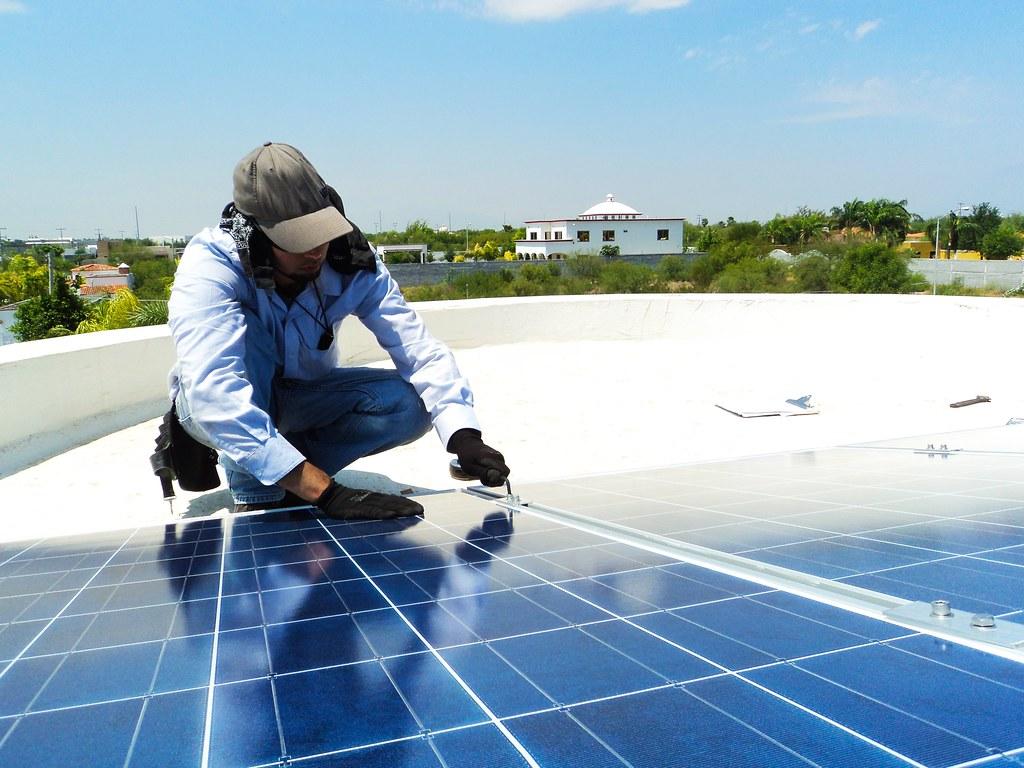What Are the Steps for Solar Panel Installation in 2025 ?

Switching to solar energy is a smart decision for homeowners and businesses aiming to reduce energy bills and support clean energy initiatives. A properly planned solar power design ensures that your system runs efficiently and delivers maximum output for years. In this guide, we’ll walk through each stage of solar panel installation, explaining what happens at every step and why it matters.
Step 1: Site Assessment and Evaluation
The first phase in any solar system installation begins with a thorough site assessment. This involves analyzing your roof space, direction, and shading to determine if it’s suitable for a rooftop solar setup. Engineers or technicians will also inspect your electrical panel to ensure it’s compatible with the system requirements.
Step 2: Creating the Solar Power Design
Once your property is approved, the next crucial step is designing the system. The solar power design process involves selecting the right number of panels, planning the panel orientation, and mapping the electrical layout. In Waco, TX, this step is especially important due to the region's high solar exposure and specific permitting guidelines. During this phase, the focus is on maximizing sunlight absorption and minimizing any shading issues throughout the day. A well-executed design typically includes
-
Custom solar panel layout tailored to your roof’s unique shape
-
Accurate energy production estimates based on local weather patterns
-
Long-term efficiency calculations for reliable system performance
Step 3: Permits and Paperwork
Before installation begins, necessary permits and approvals must be obtained from local authorities and your utility provider. This may include building permits and grid connection approvals. Though this step may take time, a professional installer will typically handle the process on your behalf.
Step 4: Procurement of Materials
After permits are approved, materials like panels, mounting hardware, inverters, and wiring are ordered. This step ensures that all equipment matches your photovoltaic system design and energy needs.
Step 5: Physical Installation
Installation starts by attaching racking systems to the roof or ground mounts, followed by placing panels in the planned solar panel layout. Next, the inverter and other electrical components are installed and connected. The physical setup typically takes one to three days, depending on system size and weather.
Step 6: Final Inspection and Grid Connection
After installation, a final inspection is conducted to verify that everything meets safety and performance standards. Your system is then connected to the grid. Once the utility company gives its approval, your setup becomes active, and you can start generating your own electricity.
Understanding Solar Panel Installation
Installing renewable energy systems in Waco, TX, offers many benefits, especially with its abundant sunlight and energy-friendly policies. Local homeowners can take advantage of state and federal incentives that help reduce upfront costs and make the transition to clean power more affordable.
Moreover, Waco’s building regulations and electric grid infrastructure are highly supportive of renewable energy. The climate provides consistent sun exposure, which enhances the overall efficiency of your rooftop energy setup. If you're located in this region, working with a knowledgeable local provider like Solar Waco can simplify the entire process, from paperwork to final inspection.
Professional teams understand the specifics of photovoltaic system design and local compliance requirements, ensuring that your system is optimized for performance and durability.
Final Thoughts
Investing in a customized energy system installation is a long-term decision that pays off in reduced utility bills and increased property value. From planning your power design to switching on your system, each step is important in ensuring long-term benefits. Whether you’re in Waco, TX, or another city with strong clean energy potential, following these steps will guide you toward a smooth and successful transition to renewable energy.
Frequently Asked Questions
1. How long does a solar panel installation take?
Most residential installations take between 1 to 3 days, not including time for permits and inspections.
2. Can I install solar panels myself?
While DIY is possible, it’s highly recommended to hire professionals to ensure safety and compliance with local regulations.
3. What is included in a solar power design?
It includes system sizing, panel orientation, electrical connections, shading analysis, and energy production forecasts.
4. Do I need a battery storage system?
Not necessarily. You can use net metering to sell excess power back to the grid, though battery systems offer additional energy independence.
5. Is solar installation worth it in cloudy climates?
Yes, solar panels still produce energy on cloudy days, although output may be reduced. Efficiency is still sufficient in most regions.
- Art
- Causes
- Best Offers
- Crafts
- Dance
- Drinks
- Film
- Fitness
- Food
- Jeux
- Festival
- Gardening
- Health
- Domicile
- Literature
- Music
- Networking
- Autre
- Party
- Religion
- Shopping
- Sports
- Theater
- Wellness



